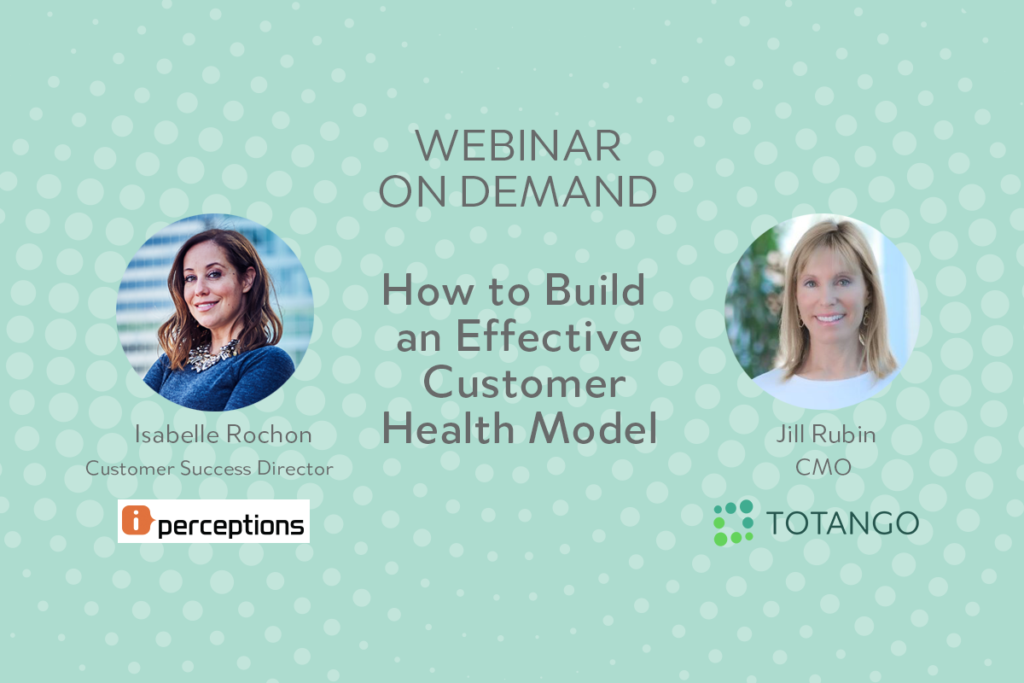Today we hosted a webinar on Customer Health with our customer, iPerceptions. There has been a TON of interest in this topic, which is why we’re calling it Part 1 of our Customer Health series. For those of you who couldn’t attend today’s webinar but have an interest, catch the highlights below the link to the recording!
What is a Customer Health Model?
A customer health model is your framework to identify the status of your customers – whether they are in good, average, or poor health. It’s important to monitor customer health to determine who needs attention, why they need attention, and what actions you should take to resolve issues in short order.
Rule #1 – Create a good customer health score
Some best practices for creating a health score include:
– Include a variety of metrics and data that are relevant to customer performance with your product
– Keep it simple but don’t minimize inputs; use a system that lets you drill down to get context on performance but can roll up information in a simplified way
– Make sure your the score is actionable – just displaying numbers or color isn’t enough; you need context on why the health changed
Rule #2 – Create different health profiles for different customer segments
Not all customers are the same, therefore you need to segment customers based on characteristics with different product behavior, such as:
– Types of accounts
– Different products
– Lifecycle stage
Important tips: Each profile should have its own health definition and score, and a customer should only qualify for one segment at a time.
Once you have a strong health score and health profiles defined, the benefits of creating a robust customer health model are many. Companies who take customer success seriously need a method to monitor changes in the health or status of their customers. A health score gives you an easy way to communicate status to people in the organization. CSMs also now have a clear path to action and can closely track progress in their portfolio.
The Customer Perspective
Director of Customer Success, Isabelle Rochon, from iPerceptions shared her perspective on implementing a customer health model. It includes their company’s approach, what worked and didn’t work and why, and what they did to course correct. Lessons learned include:
– Don’t build a health model on preconceived notions of what health is
– Don’t over segment
– Make sure the right health metrics are included to make the health score predictive
– Don’t manipulate the data to say what you want it to say
– Make sure customers don’t fall outside of your health profile segments
The bottom line: customer health is a key to driving customer success and increasing customer lifetime value! Want to share these learnings with more colleagues? Get the full webinar replay.
Watch Part 2 of the customer health series, recorded on October 26, 2017. We chatted with another customer, Feedvisor, on “Measuring the Effectiveness of a Customer Health Model” and dove into more advanced best practices.

